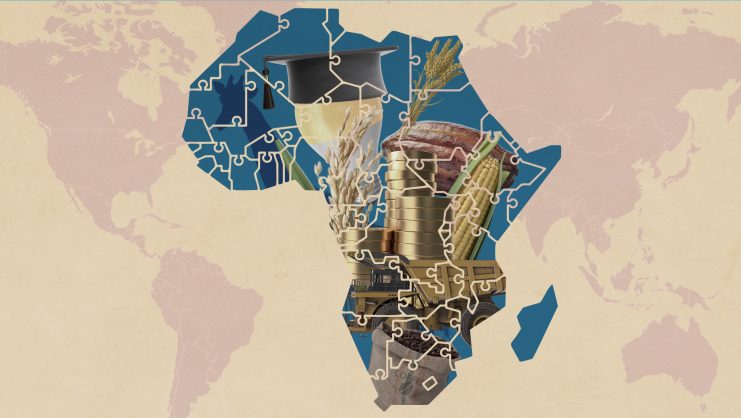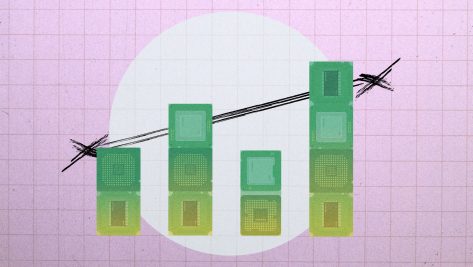Kiron Ravindran: Let’s start with your area of focus – M&A. Let’s face it; nothing about ‘Wongdoody’ or ‘Brilliant Basics’ looks like a typical software company. How does Infosys manage these cultural differences? Differences in expectations? And how to you leverage this freshness to grow Infosys’ core business?
Deepak Padaki: These acquisitions create unique capabilities within Infosys in new service areas that then shape our client engagements to deliver more value. This results in growth of the overall engagement, which could include traditional services, in newer dimensions. We do not integrate these fully with the parent – retaining their agility and culture – and since they are complementary to the parent, there is little conflict. This approach also gives the acquired company’s leaders and employees room to grow and fulfill their own professional aspirations.
Kiron Ravindran: Indian IT companies have traditionally offered cost, or efficiency, gains. Smart automation and robotization must essentially mean cannibalization of some your traditional lines of business. How does Infosys manage to offer the new without jeopardizing the old?
Deepak Padaki: Our mantra is – “if you don’t do it, someone else will.” We are a relatively high growth industry and company. So using automation to improve productivity results in more supply chain efficiencies while at the same time improving our competitiveness. From an employee perspective, automation helps them to free up time for reskilling and shifting to higher value order roles. At the end of the day, the same resource generates more revenue.
Kiron Ravindran: Speaking of the balance of Old and New; not just in Infosys, but across this sector we see frequent changes in leadership. Usually with such a change we see a re-alignment of strategy and focus. How do you make sure that Infosys is insulated from these changes? Or how do you balance what changes and what stays?
Deepak Padaki: There will always be a challenger to the status quo leadership – and our industry is no different. However, in a services oriented business, customer intimacy is key. At Infosys, our mission is to help our customers navigate their next reality – whether it is the current wave of cloud and mobile apps or the next one that could include blockchain, AI and virtual reality. Our strategy is aligned to staying relevant to our clients – in terms of service offerings, intellectual property or service delivery capabilities. So we are investing heavily into agile digital, into automation, distributed agile processes, localization and reskilling of the workforce. We have immense competitive advantage in our knowledge of our client technology landscapes, processes and priorities.
Using automation to improve productivity results in more supply chain efficiencies while at the same time improving our competitiveness.
Kiron Ravindran: The word digital is at the risk of being overused these days. Every service provider seems to offer Digital Transformation services. What is Infosys’ secret sauce? And where do we see the future of Digital Transformation?
Deepak Padaki: Some argue that everything in the technology world is “digital.” However, we opted to define “digital” as a set of outcomes our clients are looking to achieve. Not as a service line or as a particular technology cluster. So, our 5 axes of digital outcomes are around:
- Are our clients able to leverage technology to create a differentiated customer experience for their end customers?
- Are they then able to use technology to obtain better insights from the vast amounts of data they are collecting?
- Are they then able to leverage those insights to create new and innovative products and offerings in iterative and short time frames?
- Are they able to improve the return on technology by integrating systems, modernizing them and leveraging new infrastructure such as the cloud?
- Are they able to ascertain and assure themselves that their technology is delivering the actual business results in a secure and compliant manner?
We have found this approach to resonate with what our clients are looking for, rather than an internal service offering view. Any of these 5 outcomes requires various capabilities to come together. For example, to create rich customer experiences, one needs to understand brands, user process experience, digital front ends, mobile application development etc. Similarly, to get insights from data, we need capabilities in data ingestion, knowledge modeling, statistical analysis, artificial intelligence & machine learning etc.
Our secret sauce is also in the “how” – how we deliver these outcomes to our clients – and here we are investing into proximity centers, design capabilities, agile methodologies, automation ecosystems and learning platforms.
Our mission is to help our customers navigate their next reality – whether it is the current wave of cloud and mobile apps or the next one that could include blockchain, AI and virtual reality.
Kiron Ravindran: Finally what can we as an educational institution do to bridge the managerial skill and supply you with the right talent in your journey towards growth and success?
Deepak Padaki: In our interactions with universities around the world, it is clear that educational institutions have a big role to play in preparing the workforce of tomorrow. Some of the areas where they can help bridge the changing context are:
- Constant refresh of curricula to reflect the fast changing real-life application of technology.
- Engaging with industry in research projects where real-life contextual data can be used in new ways.
- Preparing millennials for always-on-learning.
- Preparing existing managers for dealing with non-hierarchical systems of working, cross cultural teams and iterative risk taking.
© IE Insights.











